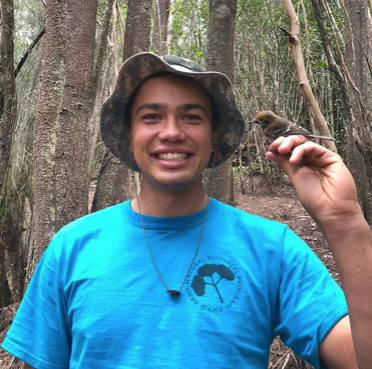The Impacts of Humans at Kamole
The Juxtaposition of Humans and Untouched Places
July 14th, 2022
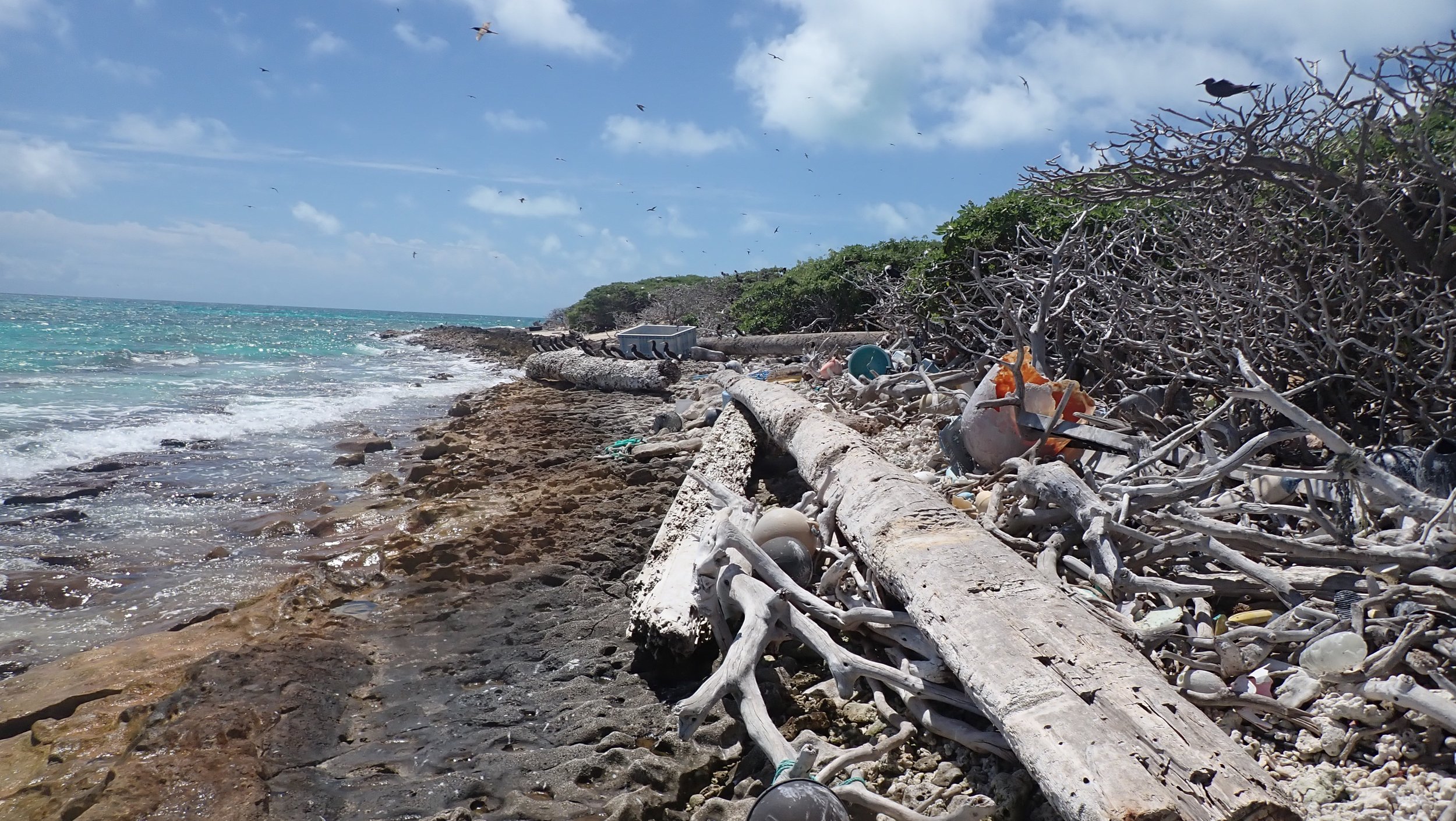
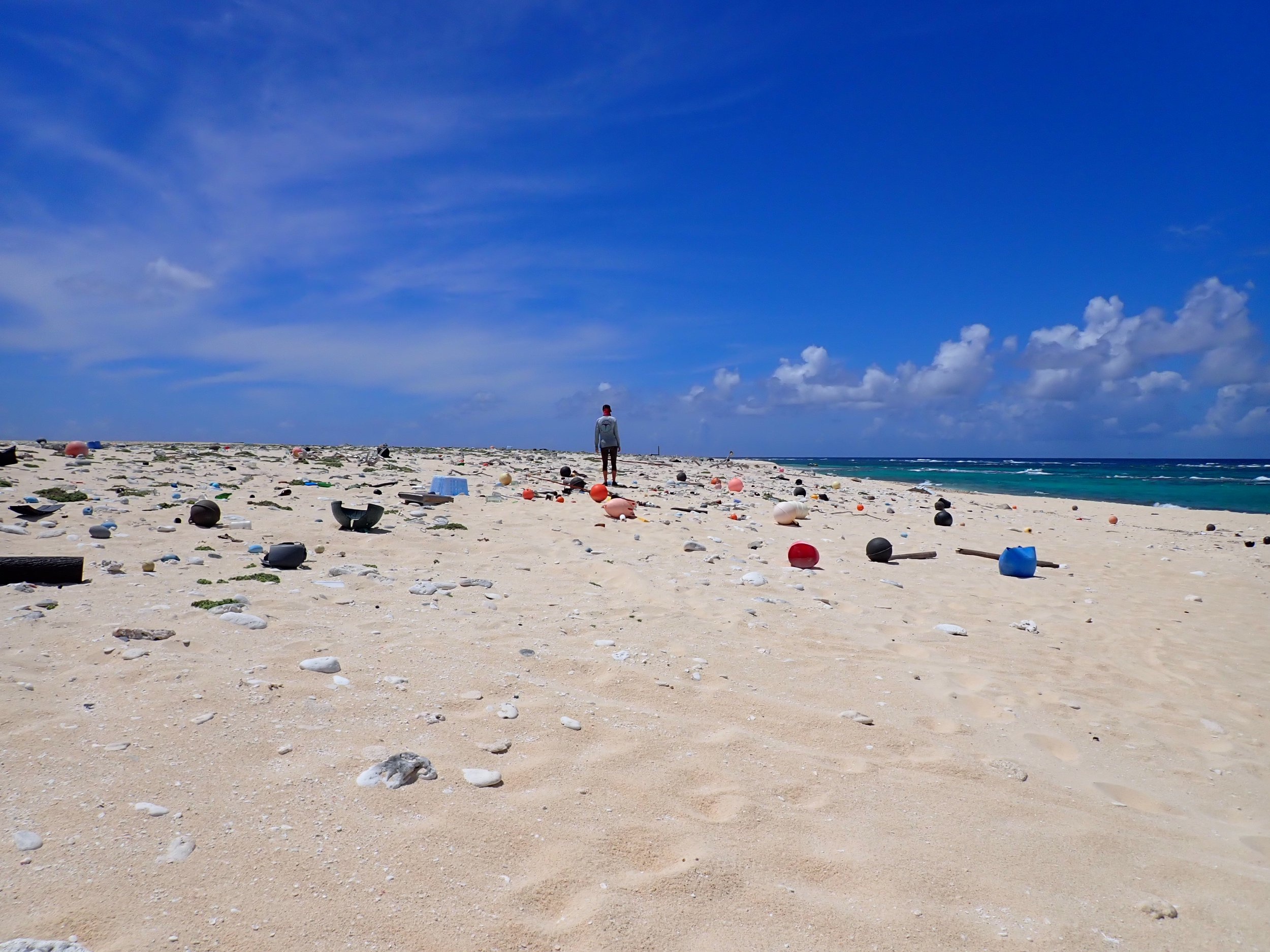
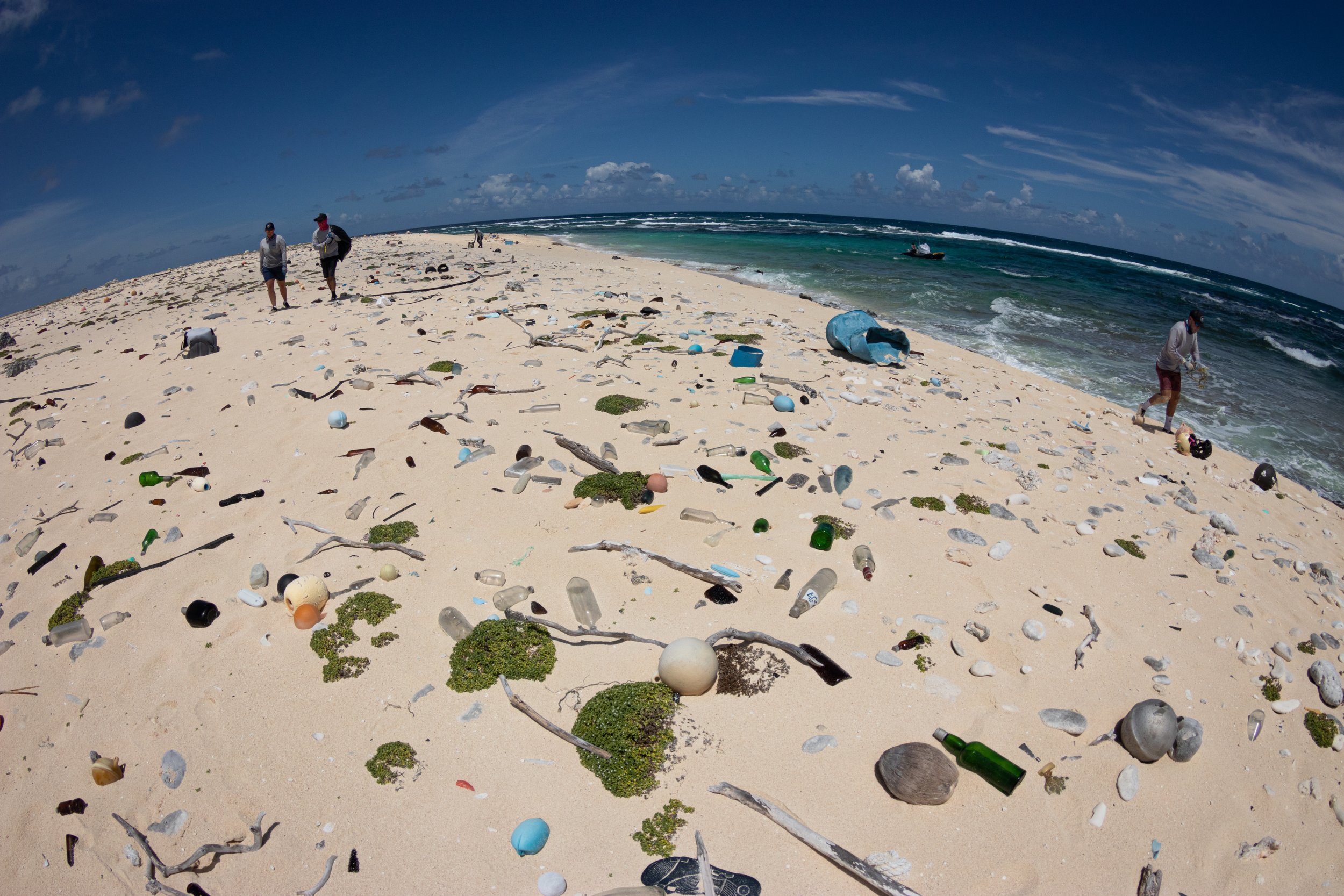
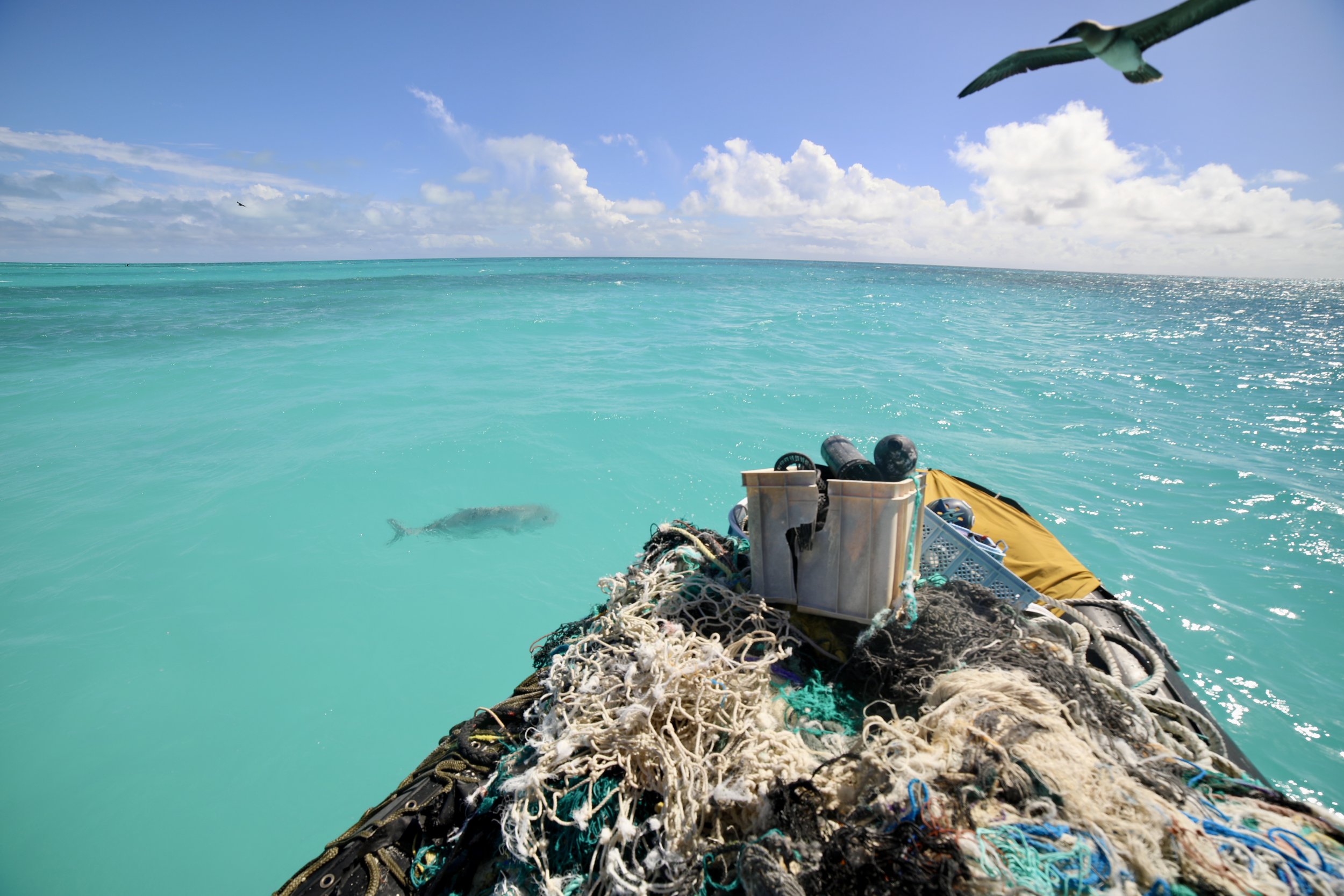
Although far away, the beauty of Kamole (Laysan) still clashes with the impacts of humans. Our job is to protect the island’s wildlife from nets, ropes, and eel traps, which threaten their ability to survive on Kamole.
While walking the beach, I was amazed by the variety of debris that littered the shores and sandy dunes. I had seen pictures but it was eye opening to see it in person. There were shoes of all types and colors strewn along the shoreline from the wind and current. If you looked hard enough you could even find a matching pair along the beach (which came in handy for me as I left my crocs at home!).
There were unicorn biking helmets, baseball bats, fridges, nets, earplugs, jars of tomato sauce, buoys, and bottles from all over the world. A pair of expensive Air Jordan sneakers was an unwelcome obstacle to the island’s native inhabitants who were trying to nest, rest, or fledge.
Kevin told us that this year was the least amount of trash he’s seen on these beaches, which was hard to believe. If you weren’t looking down as you walked, you would easily trip on the debris scattered along the ground.
Today was our first land debris day. I was so excited to be back on land. Walking the shoreline brought me back to when I was a kid during Easter. However, instead of eggs, I was scavenging for debris. I was so excited. Although I wanted to check out every nook and cranny on the island, we proceeded with caution as to not disturb the sleeping monk seals, the homes of nesting birds, or the mother birds off of their eggs. Similar to Easter, we collected the large laundry baskets that had washed up on shore and used those to collect smaller pieces of debris (net, ropes, eel traps). For bigger nets, it was a different story!
Due to the swell and reef on the windward side of the island our boats could only make it so far. We worked as a team to transport the huge nets buried beneath the sand. The best word to describe this day was “laulima”, meaning “to work together”. We wouldn’t have been able to accomplish anything if we didn’t work as a team. A great depiction of laulima was when we found a hawser line. Hawser’s are huge ropes used to tie big ships to docks! We found a hawser line that was 10 inches in diameter and 25 feet long! Cutting this wasn’t an option so 10 of us gathered together and lugged the rope back to the boats. We wouldn’t have been able to remove this obstacle without working together.
Perched on a buoy washed ashore, I enjoyed my lunch while an albatross fledgling peered up at me curiously.
Every morning and evening we give an oli of respect and gratitude for the place and people that have been there before us. As we left Kamole, I was given the honor of blowing the pū (conch shell). It was an incredibly special moment for me. That evening the waves were calm, a flock of Manu o Kū (white terns) flew above us, and I felt an immense amount of gratitude for the hard work we had done. I watched as Kamole disappeared behind us and the excitement began to build for our next destination!
Meet the Author
Kala’i Sim
